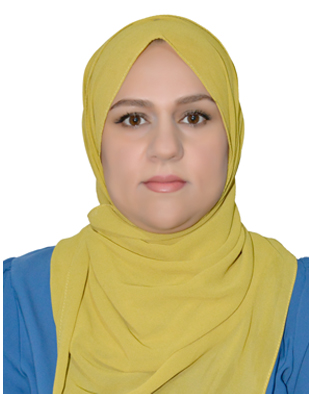
Salwa Omar Mohammed
Research InterestsData mining
Data classification
Data security.
| Gender | FEMALE |
|---|---|
| Place of Work | Polytechnic College Kirkuk |
| Department | Department of Computer Systems |
| Position | Assistant Lecturer |
| Qualification | Master |
| Speciality | Computer Science |
| salwa@ntu.edu.iq | |
| Phone | 07506237351 |
| Address | Al-Shorja - Hesabat street, Kirkuk, Kirkuk, Iraq |
Skills
Artificial Neural Network (80%)
Data Mining (80%)
Data Classification (80%)
Academic Qualification
Master
Sep 1, 2015 - Jul 31, 2017Bachlor
Sep 1, 2004 - Jul 14, 2008Working Experience
Computer Science [Assist. Lecturer]
Jul 31, 2017 - PresentTraining and Technical Support Unit [Unit Head]
Nov 1, 2011 - Oct 1, 2014Publications
Application of categorical boosting to modelling the friction behaviour of DC05 steel sheets in strip drawing test
Apr 12, 2024Journal Advances in Mechanical and Materials Engineering
publisher Scientific Letters of Rzeszów University of Technology. Mechanics
DOI https://doi.org/10.7862/rm.2024.7
Issue 1
Volume 4
It is challenging to model the coefficient of friction, surface roughness, and related tribological processes during metal contact because of flattening, ploughing, and adhesion. It is important to choose the appropriate process parameters carefully when creating analytical models to overcome the challenges posed by complexity. This will ensure the production of sheet metal formed components that meets the required quality standards and is free from faults. This research analyses the impacts of nominal pressure, kinematic viscosity of lubricant, and lubricant pressure on the coefficient of friction and average roughness of DC05 deep-drawing steel sheets. The strip drawing test was used to determine the coefficient of friction. This work utilises the Categoric Boosting (CatBoost) machine learning algorithm created by Yandex to estimate the COF and surface roughness, intending to conduct a comprehensive investigation of process parameters. A Shapley decision plot exhibits the coefficient of friction prediction models via cumulative SHapley Additive exPlanations (SHAP) data. CatBoost has outstanding prediction accuracy, as seen by R² values ranging from 0.955 to 0.894 for both the training and testing datasets for the COF, as well as 0.992 to 0.885 for surface roughness.
Thermodynamic Evaluation of Low-GWP and Environmentally Friendly Alternative Refrigerants
Mar 1, 2024Journal Mechanical Engineering Research
publisher Canadian Center of Science and Education
DOI https://doi.org/10.5539/mer.v12n1p1
Issue 1
Volume 12
Refrigerant systems, crucial for modern life, are increasingly important due to their environmental impact and rising energy costs, with their advancement influenced by social life evolution and widespread use in homes and buildings. A systematic search using thermodynamic models identified 48 possible ternary mixtures and 5 pure refrigerants. These combinations, based on thermodynamics, could provide energy savings, paving the way for real-world testing and definitive conclusions, not yet studied in literature. REFPROP refers to the reference fluid properties program, developed by NIST version 9.0 for 2010, is a program for calculating the thermodynamic and transport properties of industrially important fluids and their mixtures. This program was used to evaluate the refrigerant properties in different mixing ratios. Then, using the MATLAB version of 2020 apparatus to arrange and solve all the variables to generate the results under set boundary conditions, all the characteristics were incorporated into thermodynamic equations. when compared to R134a, the results demonstrated that mixtures of natural refrigerants usually have acceptable thermal performance; these mixtures may be recommended as suitable replacements for refrigeration and air conditioning systems because they are environmentally harmless and have a low GWP.
Enhancement of detecting wicked website through intelligent methods
Dec 9, 2016Journal Security in Computing and Communications
publisher Springer
DOI https://doi.org/10.1007/978-981-10-2738-3_31
Issue 1
Volume 1
Noticeably, different environments of wicked website include different types of information which could be a threat for all web users such as incitement for hacking sites and encouraging them for spreading notions through learning theft networks, Wi-Fi, websites, internet forums, Facebook, email accounts, etc. The proposed work deals with sites to protect from hacking through designing a method that takes full advantage of machine learning and intelligent systems’ capabilities to realize the informative contents. The ultimate goal of this work of research is to understand the system behavior and determine the best solution to secure the vulnerable users, state and society via Random Forest (RF) and Support Vector Machines (SVM) methods instead of traditional methods. Random Forest exhibited Promising Results in terms of accuracy.














